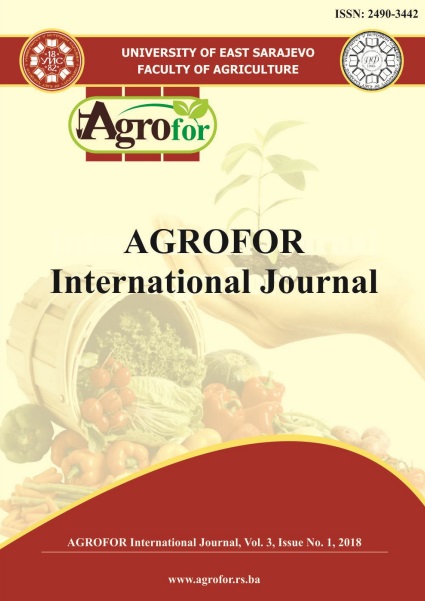RAPD ANALYSIS OF GENETIC VARIATION IN NATURAL POPULATIONS OF AEGILOPS SP. FROM SOUTH ADRIATIC
DOI:
https://doi.org/10.7251/AGRENG1801035DAbstract
New challenges that food production is facing, requires novel approach in
agricultural strategy. The scissors of growing demand for food and the limits of the
Earth's resources are forcing plant breeders to run for the new borders, utilizing all
the available genetic variation in order to create fruitful and economically sound
cultivars. Aegilops sp. (Poaceae) is a potential source of genetic variation for wheat
improvement. RAPD marker analysis was used in order to distinguish and evaluate
different genotypes of Aegilops sp. population samples from the collection
gathered during few years’ expeditions in South Adriatic, along the coastal, littoral
and the inland parts of Montenegro. Ten randomly amplified polymorphic DNA
markers (RAPDs) were tested: OPA-05, OPA-08, OPB-06, OPA-02, OPA-07,
OPA-25, OPB-07, OPB-18, OPC-06, OPC-10 to examine genetic structuring on 18
samples of 6 populations of different Aegilops sp. According to global AMOVA,
75% of total gene diversity was attributable mostly to diversity within population
(ΦPT =0.205 p=0.001), indicating that the groups of studied goat grass populations
were seemingly to differing genetically. In contrast, 25% of the variation came
from variation among populations. According to PCoA, the distribution of 18 goat
grass accessions by Principal Coordinate Analysis shows 3 distinct groups. PCo
axis 1, PCo axis 2, and PCo axis 3 account for 20.8%, 18.2% and 14.1% of the
variation, respectively. The results showed that RAPD markers could be a
convenient tool for investigating genetic variation and for detecting genetic
structuring of populations. Genetic variability formed under natural selection was
entrenched.

